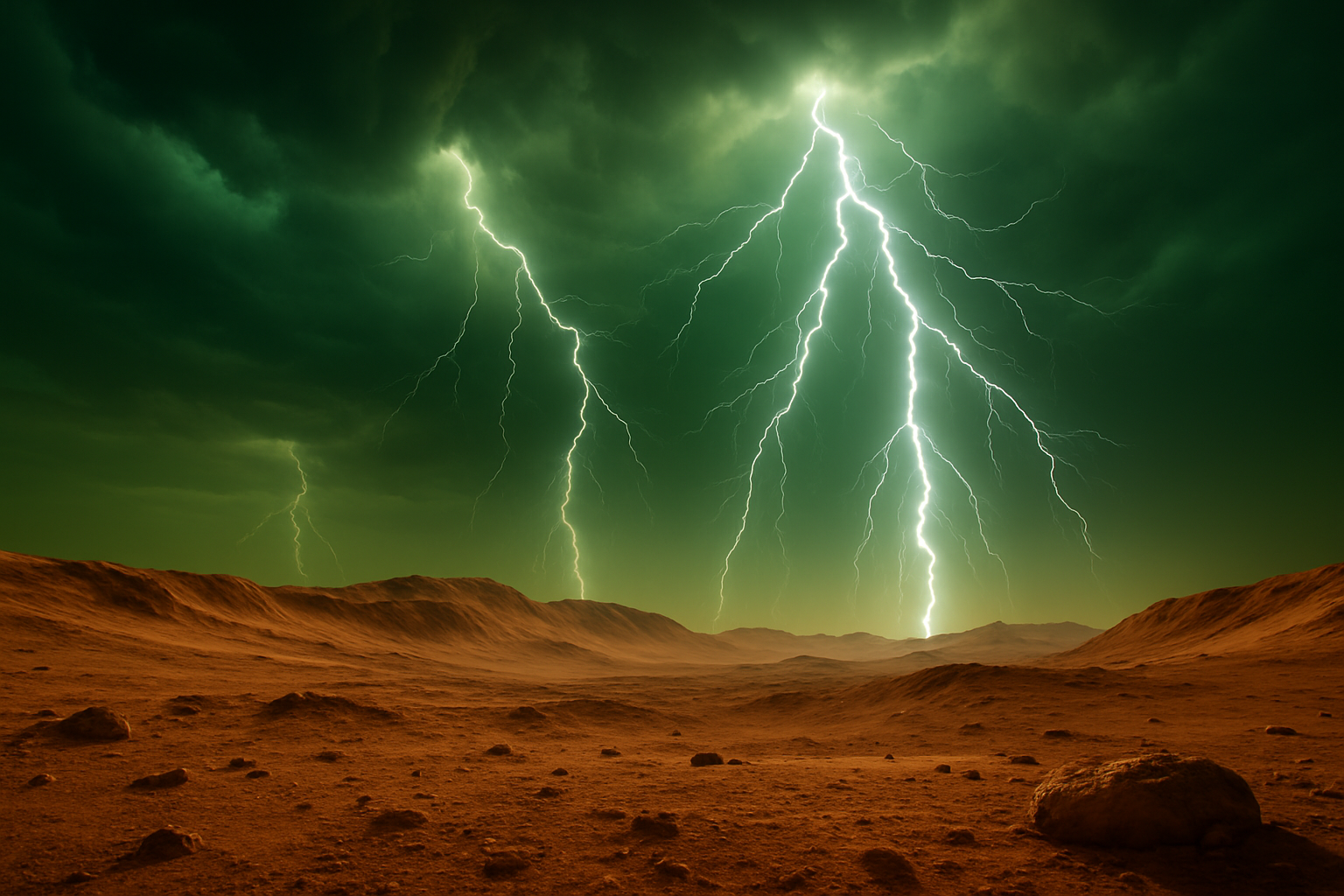Lightning, spark of life on tidally locked exoplanets? ⚡
Published by Adrien,
Source: Monthly Notices of the Royal Astronomical Society
Other Languages: FR, DE, ES, PT
Source: Monthly Notices of the Royal Astronomical Society
Other Languages: FR, DE, ES, PT
Follow us on Google News (click on ☆)
The planet Proxima b, located in the habitable zone of its star, is an ideal candidate for searching for signs of life. However, its tidal locking with its star raises questions about the distribution and frequency of lightning.

Simulations conducted by Denis Sergeev show that lightning on these planets is rare and localized. Unlike Earth, it is primarily concentrated on the day side or near the terminator line.
The study published in the Monthly Notices of the Royal Astronomical Society highlights the conditions for the emergence of life on these worlds. The scarcity of lightning and its uneven distribution could limit the formation of prebiotic compounds.
Despite these obstacles, the possibility of life on tidally locked exoplanets remains. Natural mechanisms have often surprised us with their ability to sustain life under extreme conditions.
How does lightning influence prebiotic chemistry?
Lightning plays a crucial role in the formation of prebiotic molecules by breaking the bonds of atmospheric gases. These chemical reactions can lead to the creation of amino acids, the building blocks of proteins.
On early Earth, lightning was likely a major energy source for these reactions. This phenomenon on exoplanets could be similar, though less frequent.
The specific conditions of tidally locked planets might alter the efficiency of these processes. The location and intensity of lightning are key factors to consider.
What is tidal locking and how does it affect climate?
Tidal locking occurs when a planet always shows the same face to its star, like the Moon with Earth. This phenomenon creates an extreme contrast between the day and night sides.
On Proxima b, this configuration could generate powerful winds transporting heat from the day side to the night side. These conditions profoundly influence weather patterns and the distribution of lightning.
The absence of rotation complicates the formation of varied weather systems. This could limit the diversity of environments conducive to life on these planets.